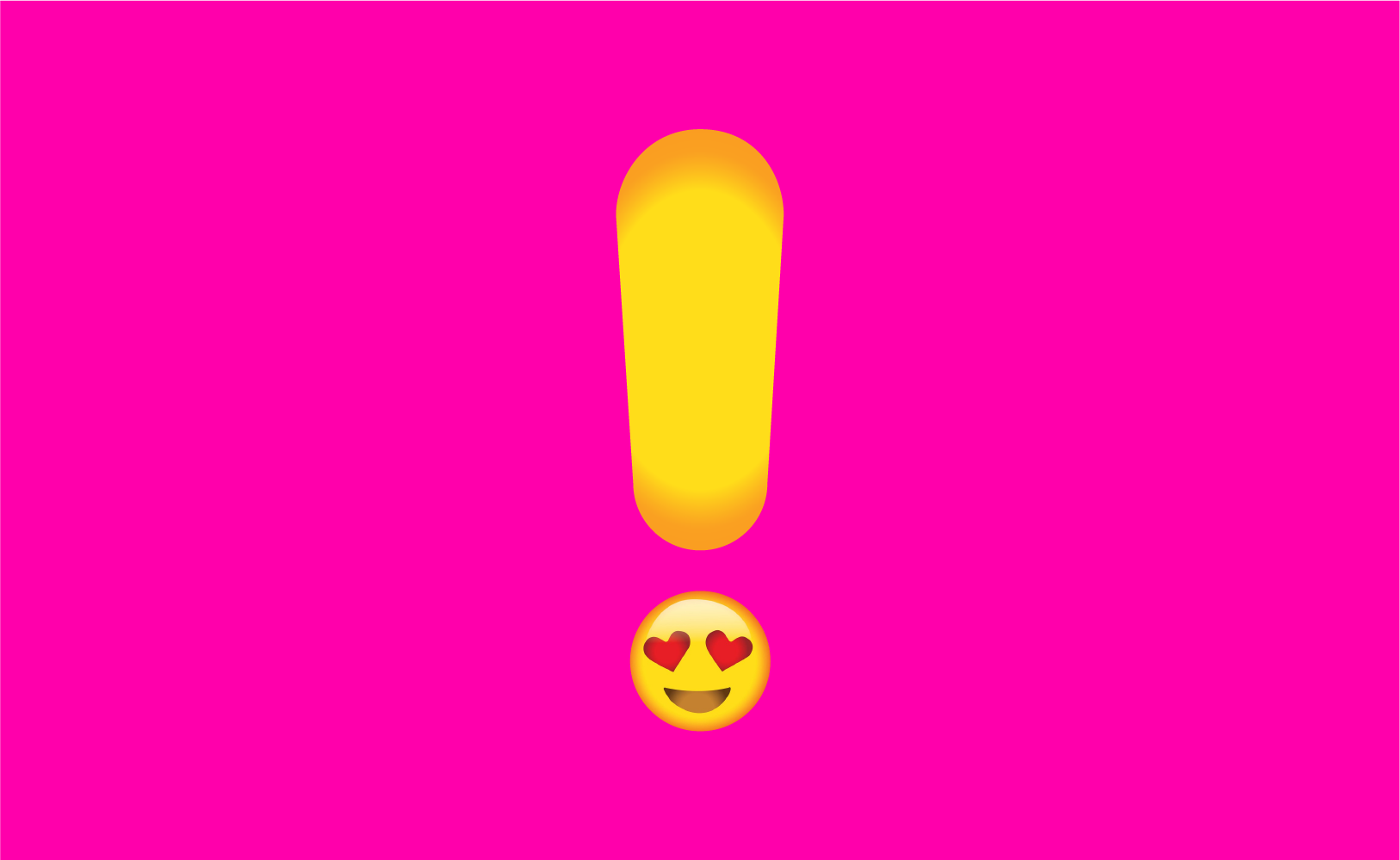ALL HAIL THE EXCLAMATION MARK!
Exclamation marks get a lot of stick. In a world overrun with emojis, acronyms, text speak and apostrophe abuse, the reaction exclamation marks provoke these days is more FFS than LOL. Which is a little unfair.
The exclamation mark is thought to have originated from Latin times and now used in many retail graphics design projects. But perhaps it was when F Scott Fitzgerald claimed that using an exclamation mark is like laughing at your own jokes, that the “screamer” started to become seen as uncool.
Personally, I love exclamation marks. They’re under-appreciated, misunderstood and, quite frankly, deserve a little more respect!
When I write emails, I like to write in a warm and humorous manner (when appropriate), and I use exclamation marks to put people at ease. I want the reader to understand – if the email is about an awkward matter, for example – that I don’t mean to cause offence. I come in peace!
The exclamation mark is so much more than a clash-bang of symbols at the end of a gag. It’s also a subtle mediator, a diffuser of formality or tension. If you’re reading something peppered with exclamation marks, the chances are that the person who wrote it is making an effort to be friendly and good humoured. There are worse crimes.
This anecdote must surely bring a smile to the most hardened exclamation mark haters: Victor Hugo once sent a telegram to his publisher asking how his book was doing. He didn’t say much – just a simple “?”. The response was an equally monosyllabic: “!” (indicating the book was doing OK.) Perhaps it’s words we overuse, not exclamation marks?
So the next time you see an exclamation mark, give it a little more respect. It kindly points out humour, subtle humility, bargains and danger. And it can also be used as a gentle kick up the arse, like this:
Get over it, misery guts of the world!
Tash
